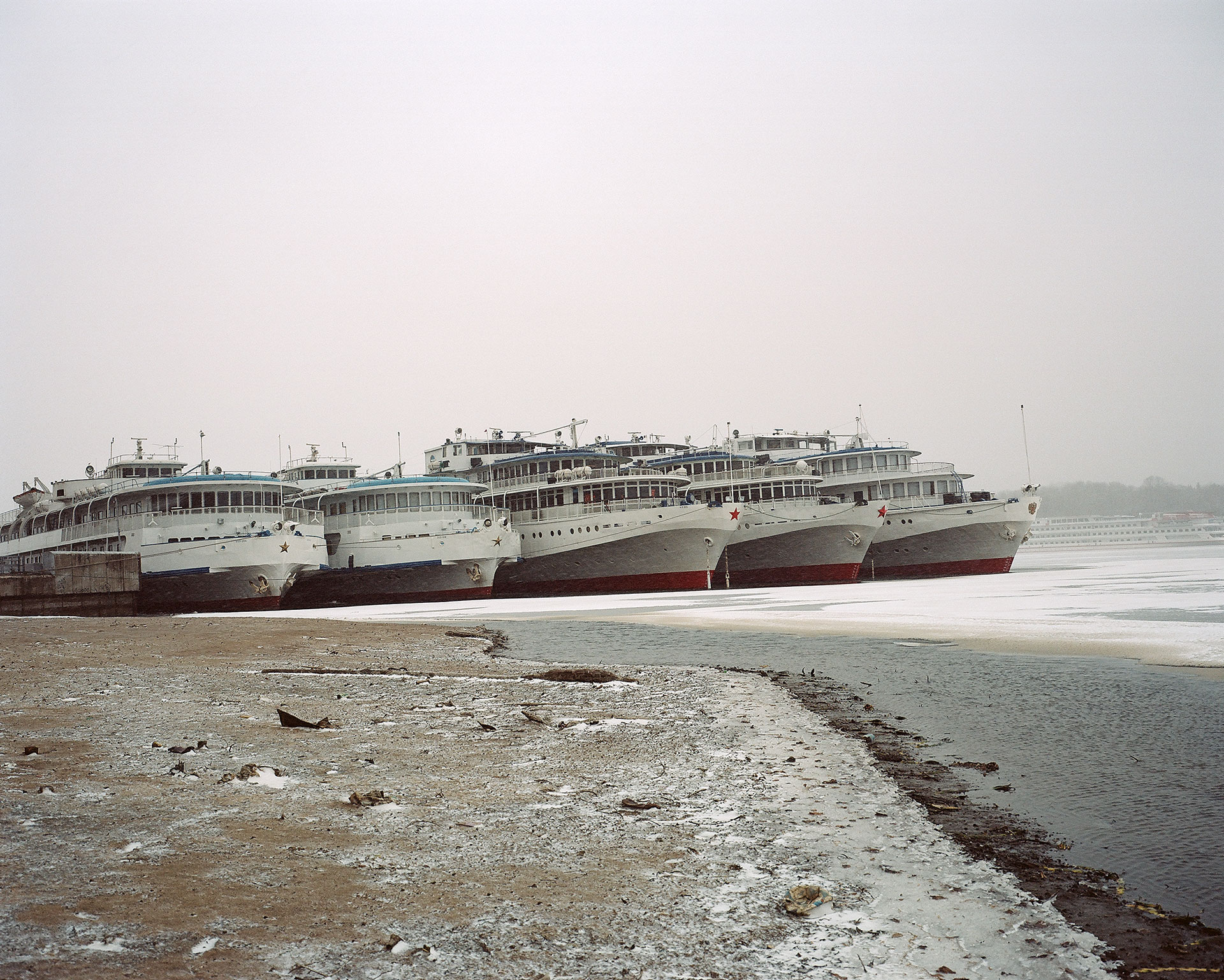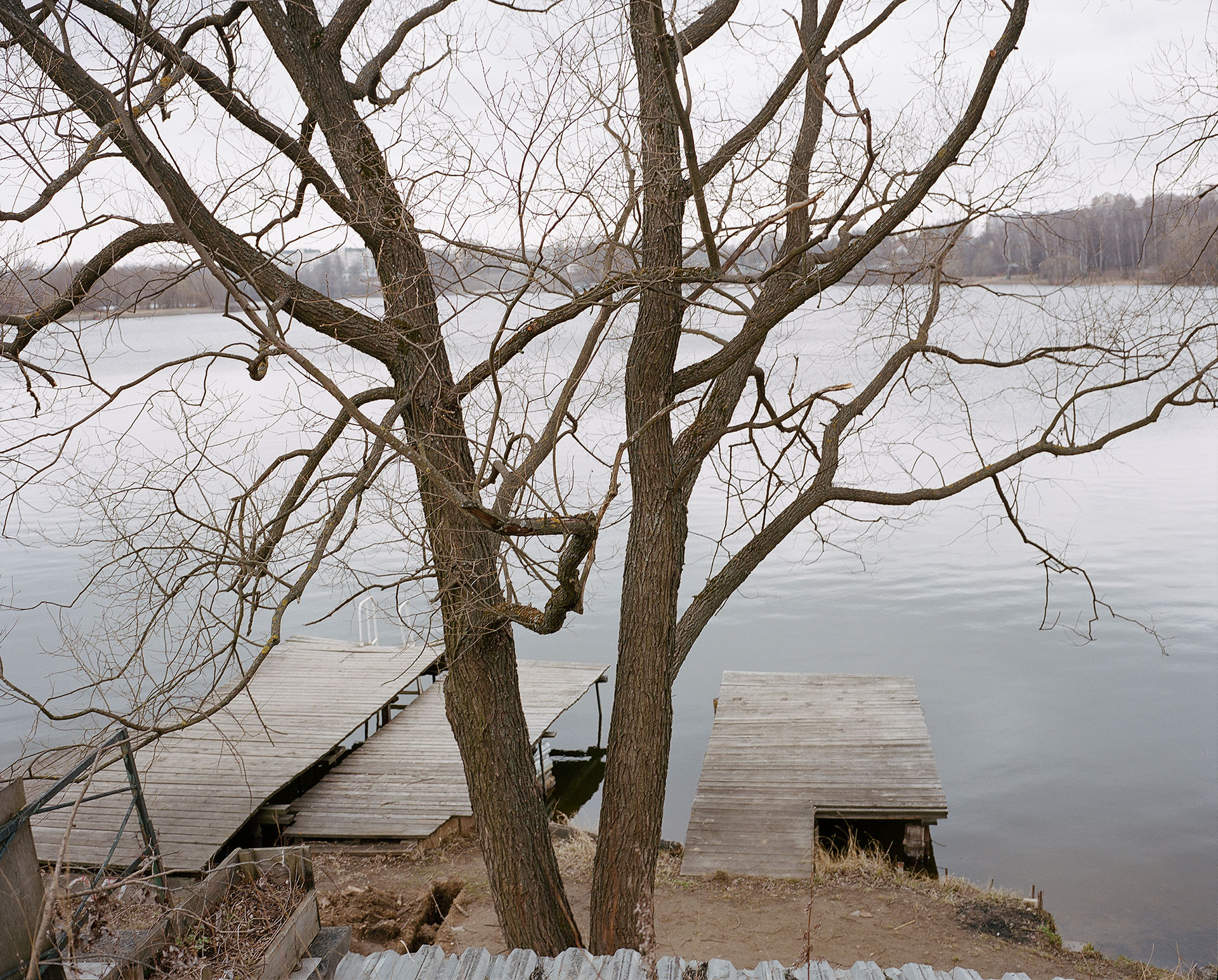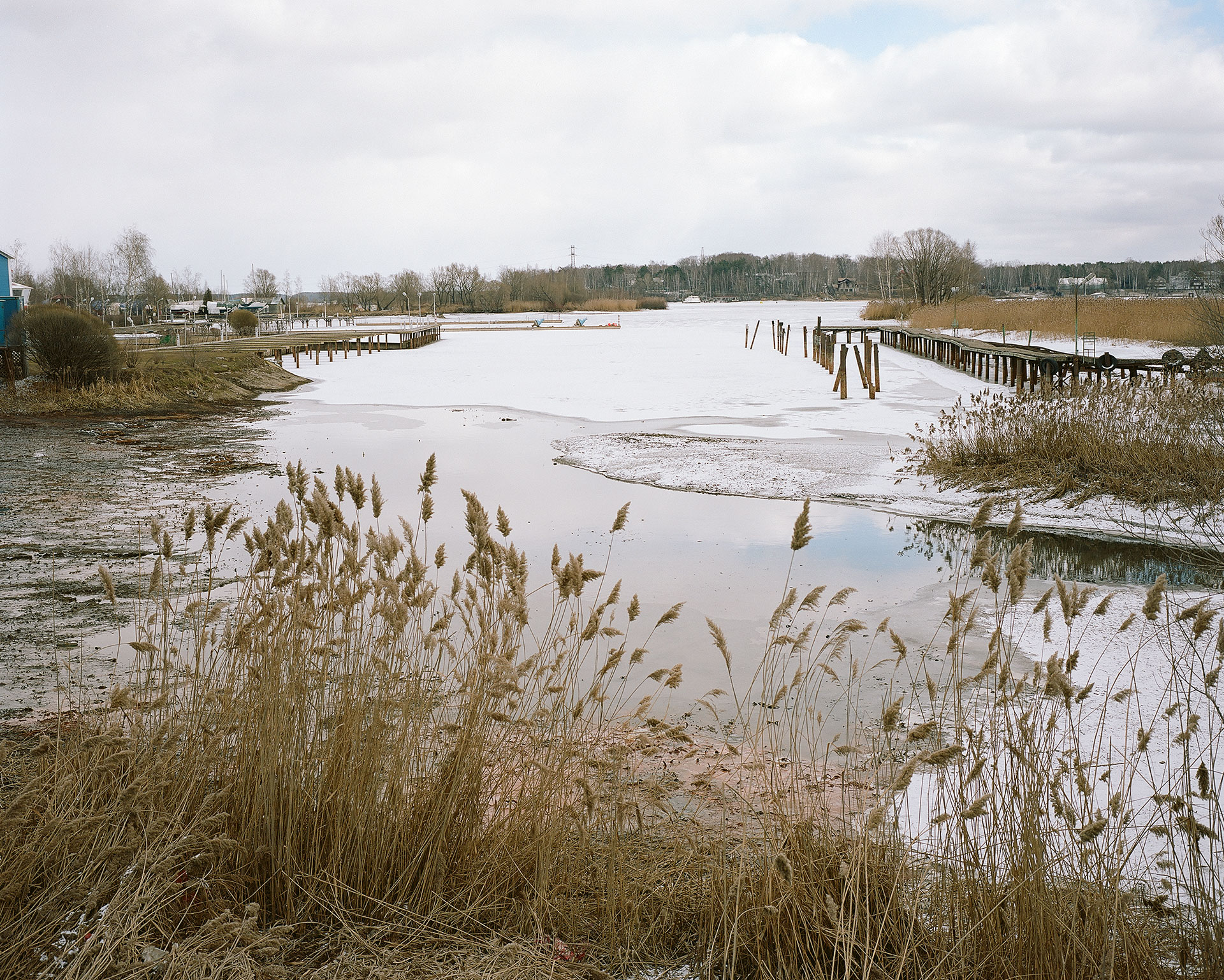In her work, Russian photographer Olya Ivanova often deals with complex questions of history, memory and national identity. Her main tool has been portraiture, as wielded in her fascinating studies of isolated communities in remote villages of Russia. In her new project Canal, however, Ivanova has taken a different route, telling a story of the city and the country through landscape.
The project captures the Moscow Canal, a rarely celebrated man-made river vital to the city’s existence. In her description of the project, Ivanova simply lists the facts: “The Moscow Canal was built to connect the Moscow River with the Volga River. In the 1930s it helped to deal with the shortage of water in Moscow. Now it delivers more than 60 percent of the drinking and industrial water to the city of Moscow. During the Second World War, when the Nazis came close to the canal, water was flushed through the dam and locks were blown up by Soviet soldiers to stop the passage of the Germans. The canal (128 km in length) was constructed from 1932 to 1937 by gulag prisoners. During the process, more than 22,000 prisoners died.”
This short biography of the river echoes the history of Moscow and the whole nation: sprawling geography and imperial ambitions, an overpopulated city, the scars of war and a tragic heritage of repression. At the same time, Ivanova’s photos are elegiac, at times romantic snapshots of Moscow’s rural edgelands. In the wake of the northern spring, life by the water is quiet. Time passes like the flow of the river.
Image: Olya Ivanova
Text: Anastasiia Fedorova




































